预约演示
更新于:2025-10-19

East China University of Science & Technology
更新于:2025-10-19
概览
标签
肿瘤
其他疾病
感染
小分子化药
化学药
合成多肽
疾病领域得分
一眼洞穿机构专注的疾病领域
暂无数据
技术平台
公司药物应用最多的技术
暂无数据
靶点
公司最常开发的靶点
暂无数据
| 排名前五的药物类型 | 数量 |
|---|---|
| 小分子化药 | 35 |
| 化学药 | 3 |
| 合成多肽 | 3 |
| 蛋白水解靶向嵌合体(PROTAC) | 3 |
| 放射与诊断药物 | 2 |
关联
50
项与 华东理工大学 相关的药物靶点- |
作用机制- |
在研机构 |
原研机构 |
在研适应症 |
非在研适应症- |
最高研发阶段临床前 |
首次获批国家/地区- |
首次获批日期- |
3
项与 华东理工大学 相关的临床试验NCT06509230
Multimodal Digital Image Fusion Technology Based on Deep Learning to Predict Significant Liver Fibrosis and Its Application in Multi-center Research
The deep learning method based on convolutional neural network (CNN) was used to extract the relevant features of liver fibrosis classification from the multi-modal information of digital pathological sections, clinical parameters and biomarkers of a large number of existing cases of liver puncture, and the U-Net architecture of CNN was used to segment and extract the features of clinical medical images.
开始日期2024-07-20 |
申办/合作机构  浙江省人民医院 浙江省人民医院 [+1] |
NCT04135300
Gene Therapy for Chinese Hemophilia B With Adeno-associated Virus (AAV) Vector
GT2019001 is a Phase 1, open- label, non- randomized, uncontrolled, single dose pilot study to evaluate the safety, tolerability and kinetics of a single intravenous infusion of BBM-H901 in hemophilia B subjects with ≤2IU/dl residual FIX levels. BBM-H901 is an adeno-associated viral (AAV) vector designed to drive expression of the human factor IX (hFIX) transgene and raise circulating levels of endogenous FIX.
开始日期2019-10-16 |
申办/合作机构 |
NCT02609074
Pilot Clinical Trial of CPC/rhBMP-2 Microffolds as Bone Substitute for Bone Regeneration
Objective: The investigators initiated a pilot clinical study to test safety and preliminary efficacy in humans (bone tissue repairing capacity) and to evaluate standard clinical and rehabilitation protocols.
Summary Background Data: Bone tissue engineering scaffolds loading growth factors have been considered as the most perspective among all bone substitutes, yet little progress of its clinical translation has been made. The concept of "micro-scaffolds" was proposed in this study to provide a trajectory to its clinical translation.
Methods: Pre-cured CPC/rhBMP-2 micro-scaffolds have been successfully developed and further applied as an easy-to-operate filler for bone regeneration in a pilot clinical study. Patients of tibial plateau fractures, proximal humeral fractures, or calcaneal fractures at a similar level of severity were randomly divided into two groups and treated by CPC/rhBMP-2 microffolds or traditional CPC paste (control group).
Summary Background Data: Bone tissue engineering scaffolds loading growth factors have been considered as the most perspective among all bone substitutes, yet little progress of its clinical translation has been made. The concept of "micro-scaffolds" was proposed in this study to provide a trajectory to its clinical translation.
Methods: Pre-cured CPC/rhBMP-2 micro-scaffolds have been successfully developed and further applied as an easy-to-operate filler for bone regeneration in a pilot clinical study. Patients of tibial plateau fractures, proximal humeral fractures, or calcaneal fractures at a similar level of severity were randomly divided into two groups and treated by CPC/rhBMP-2 microffolds or traditional CPC paste (control group).
开始日期2013-03-01 |
申办/合作机构  华东理工大学 华东理工大学 [+2] |
100 项与 华东理工大学 相关的临床结果
登录后查看更多信息
0 项与 华东理工大学 相关的专利(医药)
登录后查看更多信息
29,828
项与 华东理工大学 相关的文献(医药)2026-12-01·Nano-Micro Letters
Te-Modulated Fe Single Atom with Synergistic Bidirectional Catalysis for High-Rate and Long–Cycling Lithium-Sulfur Battery
Article
作者: Zhao, Hongbin ; He, Ting ; Wang, Lijun ; Guo, Jian ; Yu, Jia ; Chen, Lu ; Liu, Kangfei
Abstract:
Single-atom catalysts (SACs) have garnered significant attention in lithium-sulfur (Li-S) batteries for their potential to mitigate the severe polysulfide shuttle effect and sluggish redox kinetics. However, the development of highly efficient SACs and a comprehensive understanding of their structure–activity relationships remain enormously challenging. Herein, a novel kind of Fe-based SAC featuring an asymmetric FeN5-TeN4 coordination structure was precisely designed by introducing Te atom adjacent to the Fe active center to enhance the catalytic activity. Theoretical calculations reveal that the neighboring Te atom modulates the local coordination environment of the central Fe site, elevating the d-band center closer to the Fermi level and strengthening the d-p orbital hybridization between the catalyst and sulfur species, thereby immobilizing polysulfides and improving the bidirectional catalysis of Li-S redox. Consequently, the Fe-Te atom pair catalyst endows Li-S batteries with exceptional rate performance, achieving a high specific capacity of 735 mAh g−1 at 5 C, and remarkable cycling stability with a low decay rate of 0.038% per cycle over 1000 cycles at 1 C. This work provides fundamental insights into the electronic structure modulation of SACs and establishes a clear correlation between precisely engineered atomic configurations and their enhanced catalytic performance in Li-S electrochemistry.
2026-12-01·Nano-Micro Letters
Reproducible Fabrication of Perovskite Photovoltaics via Supramolecule Confinement Growth
Article
作者: Liu, Da ; Wu, Yongzhen ; Zhou, Ziren ; Lian, Huijun ; Yang, Hua Gui ; Yang, Shuang ; Li, Qing ; Lin, Miaoyu ; Yuan, Haiyang ; Xie, Jin ; Sui, Xinyuan ; Liu, Xinyi ; Hou, Yu ; Gao, Feng
Abstract:
The solution processibility of perovskites provides a cost-effective and high-throughput route for fabricating state-of-the-art solar cells. However, the fast kinetics of precursor-to-perovskite transformation is susceptible to processing conditions, resulting in an uncontrollable variance in device performance. Here, we demonstrate a supramolecule confined approach to reproducibly fabricate perovskite films with an ultrasmooth, electronically homogeneous surface. The assembly of a calixarene capping layer on precursor surface can induce host–guest interactions with solvent molecules to tailor the desolvation kinetics, and initiate the perovskite crystallization from the sharp molecule–precursor interface. These combined effects significantly reduced the spatial variance and extended the processing window of perovskite films. As a result, the standard efficiency deviations of device-to-device and batch-to-batch devices were reduced from 0.64–0.26% to 0.67–0.23%, respectively. In addition, the perovskite films with ultrasmooth top surfaces exhibited photoluminescence quantum yield > 10% and surface recombination velocities < 100 cm s−1 for both interfaces that yielded p-i-n structured solar cells with power conversion efficiency over 25%.
2026-03-01·BIOMATERIALS
Chemotaxis-guided nanoplatform for non-alcoholic steatohepatitis therapy via macrophage reprogramming, hepatoprotection and gut microbiome modulation
Article
作者: Wang, Yanwen ; Zhao, Xinlin ; Pan, Xier ; Zou, Jiafeng ; Tang, Yun ; Ma, Ying ; Gao, Feng ; Chen, Xinyi ; Lin, Yiting
Non-alcoholic steatohepatitis (NASH), characterized by hepatic steatosis, inflammation, and varying degrees of fibrosis, has become a growing global health burden. Obeticholic acid (OCA, a farnesoid X receptor agonist) has shown limited efficacy due to poor solubility, single-target mechanisms, and off-target side effects, notwithstanding the great promise of this agent in NASH clinical trials. Here, we designed M2 macrophage-derived membrane (M2M)-camouflaged poly (lactic-co-glycolic acid) (PLGA) nanoparticles (O@PLGA@M) to achieve targeted OCA delivery to the inflamed liver niche for recovering hepatic homeostasis in NASH. The M2M improved the inflamed liver-targeting of the nanoplatforms via chemotaxis and promoted M1-to-M2 macrophage repolarization, as evidenced by a 2.5-fold increase in CD206 expression and 45 % reduction in CD86 expression in the liver. In a methionine/choline-deficient (MCD) diet-induced murine NASH model, O@PLGA@M exhibited excellent biosafety and multifaceted anti-NASH efficacy, including anti-steatosis, anti-inflammatory, and anti-fibrotic effects. Mechanistically, O@PLGA@M reprogrammed macrophages by modulating macrophage polarization and inhibiting recruitment of immune cells to reduce the inflammatory cascade. They also exerted hepatoprotection effects by reducing steatosis and hepatocyte damage. Moreover, O@PLGA@M modulated the gut microbiome by redirecting it towards a beneficial state, which further relieved NASH through the gut-liver axis. These findings demonstrated that the biomimetic nanoplatforms could be employed as promising strategies that integrated targeted delivery and multimodal synergistic therapy for NASH management.
441
项与 华东理工大学 相关的新闻(医药)2025-10-15
·智药邦
2025年10月7日,华东理工大学药学院和华东师范大学药学院的李洪林教授/刁妍妍副研究员/朱丽丽教授/张凯教授研究团队在Nature旗下期刊《Communications Chemistry》发表最新成果(论文题目:Exploring the macrocyclic chemical space for heuristic drug design with deep learning models)。
团队提出了创新性的大环分子生成模型CycleGPT,并结合逐级迁移学习策略与新型采样方法HyperTemp,首次将“大环结构修饰”转化为“大环化学空间探索”,显著缓解了长期困扰该领域的数据稀缺问题。在基于CycleGPT与CyclePred(JAK2活性预测模型)的前瞻性药物设计中,研究团队进一步验证了该方法的实用性,成功发现了一种兼具良好活性与激酶选择性的新型JAK2抑制剂候选物。在动物实验中,该分子在红细胞增多症模型中展现出显著的治疗潜力。
研究背景
大环类化合物通常含有十二元环及以上的环状结构,其结构介于小分子和生物抗体药类大分子之间,这些化学结构能够与蛋白质形成较大的接触界面,相比分子量相当的直链化合物,其往往具有更高的结合亲和力和更好的选择性。同时,它们的变色龙效应可提高药物的稳定性,并赋予其有利的药代动力学特征,因而近年来逐渐成为药物研发的热点。
然而,大环药物的理性设计并不容易。其设计过程往往包括两个关键步骤:1.直链化合物大环化;2.大环结构修饰。
目前已有若干计算方法针对线性化合物进行大环化,但在“如何基于已有活性大环进行结构修饰,以提升成药性或扩展临床候选分子库”这一问题上,仍缺乏有效手段。数据库中大环分子的比例极低(如ChEMBL中仅占1–2%),大环化学空间几乎是一片“未被照亮的领域”,研究者更多依赖药化经验与试错,这也进一步制约着大环药物的研发进程。
研究内容
1.大环生成模型——CycleGPT
CycleGPT是首个基于先导大环分子进行化学空间扩展,实现大环结构修饰的生成模型。通过引入一种渐进式迁移学习策略,模型能够从线性分子逐步迁移到具体靶点活性大环的学习任务,有效利用稀疏的大环数据,生成合理且多样的候选结构(图1)。
图1 CycleGPT示意图
2.创新的采样策略HyperTemp
在分子生成领域中,采样算法和网络架构共同决定了生成SMILES的质量。本研究提出的HyperTemp sampling在Tempered sampling的基础上进一步优化,对生成token的概率分布进行更精细调整,在提高新颖性的同时保持生成大环的有效性。此外,本研究引入另外13种采样策略进行对比,这是首次针对大环分子生成采样方法的系统性探讨。
3.药物设计实例验证
在JAK2靶点药物设计中,研究团队利用CycleGPT结合HyperTemp sampling以及JAK2预测模型CyclePred(图2),探索已知JAK2大环抑制剂的化学空间,获得具有高活性高选择性以及体内药效的备选大环化合物,优于上市药物。
图2 CyclePred示意图
研究结果
1.生成效果
研究人员首先评价了大环有效性与新颖性方面的指标,包括Validity、Macrocycle_ratio以及novel_unique_macrocycles。novel_unique_macrocycles为综合指标,用于衡量生成的有效,独一且新颖的大环比例。结果可以看到,在生成novel_unique_macrocycles指标上,CycleGPT结合HyperTemp sampling(CycleGPT-HyperTemp)相比其他模型(同样在大环数据集上训练后进行分子生成)具备显著优势(表1)。
表1 CycleGPT-HyperTemp与其他模型的对比
2.采样机制
为了更全面地了解HyperTemp采样方法的特点和性能,研究人员以CycleGPT作为基础模型,并将HyperTemp替换为13种不同的采样策略,在novel_unique_macrocycles这一指标方面,HyperTemp采样方法在所有采样算法中表现最佳。此外,研究人员进一步分析了HyperTemp采样算法对生成token的影响。发现在更精细的概率调整后,HyperTemp相比Tempered sampling进一步减少了对最优token的偏好,并增强了对次优token的探索,从而提高了token采样的多样性并增强了新颖性(图3)。
图3 HyperTemp采样性能
3.结构修饰能力
为了评估方法在下游靶点应用中的能力,研究人员使用CycleGPT-HyperTemp方法扩展了大环化合物Loratinib的化学空间(图4)。可以看出,生成的大环化合物正确迁移到了Loratinib附近的化学空间。此外,从生成的示例分子可以看出,CycleGPT实现了(1)大环骨架跃迁,以及(2)大环取代基修饰。这与药物化学中的常见结构修饰方法一致,体现了CycleGPT方法所实现的结构修饰实用性。
图4 Loratinib结构修饰大环的UMAP可视化示意图
4.药物验证
在本研究中,研究人员利用CycleGPT从已知的3个JAK2大环化合物出发,在其周围的化学空间进行探索修饰,获得5000多个候选大环分子。通过CyclePred进行JAK2活性预测,以及对接模拟,最终挑选了6个备选分子进行合成验证。6个大环分子中有3个对JAK2的抑制活性达到了nM级别。活性最强的化合物2,IC50达到了1.17 nM,优于上市药物Fedratinib(表2)。
表2 化合物1-6的结构及体外活性
在激酶谱测试中,化合物2仅仅对JAK2在内的17种野生型激酶具备一定的活性,而Pacritinib和Fedratinib抑制的野生型激酶的数量为分别为55和34(图5)。这种更优的激酶选择性对控制药物的脱靶毒性来说,意义非凡。
图5 激酶谱选择性测试
此外,研究人员对化合物2进行动物实验验证。在红细胞增多症小鼠模型中,它的药效甚至优于更高剂量的对照药物。
总结
本研究提出的CycleGPT+HyperTemp+CyclePred框架,为大环化合物的结构修饰提供了全新思路:
1.方法学层面:CycleGPT引入渐进式迁移学习策略,将结构修饰问题转化为化学空间探索,创新性地缓解了长期困扰该领域的数据稀缺问题。HyperTemp采样算法提升了生成大环的新颖性,并可迁移应用于其他需要提升新颖性的序列生成任务中(例如RNA序列生成,蛋白序列生成,开放式文本生成等)。
2.工具价值:CycleGPT模型生成结果相比先导大环的修饰部分与药物化学常见修饰策略吻合,包括了大环骨架跃迁以及大环取代基修饰,展示了其较强的实用性。
3.应用前景:通过CycleGPT发现了具有优越活性与选择性的JAK2抑制剂候选物,并验证了其在体内红细胞增多症治疗中的潜在价值,体现了该方法在药物设计中的广阔应用前景。
该工作不仅为大环类药物设计提供了可行路径,也为人工智能驱动的药物研发拓展了新方向。未来,随着方法进一步优化和扩展,AI有望成为点亮大环化学空间的关键引擎,加速创新药物的发现与发展。
华东理工大学博士生胡枫、华东理工大学硕士生贾晓彤和华东理工大学硕士生廖文杰为本文共同第一作者,华东理工大学/华东师范大学药学院李洪林教授、刁妍妍副研究员、朱丽丽教授、张凯教授为该文章的通讯作者。该工作得到了国家重点研发计划(2022YFC3400501)、国家自然科学基金(82425104/82404517)等项目的资助。
参考文献
Hu F, Jia X, Liao W. et al. Exploring the macrocyclic chemical space for heuristic drug design with deep learning models. Communications Chemistry. 2025, 8: 299.
https://www.nature.com/articles/s42004-025-01686-w
--------- End ---------
感兴趣的读者,可以添加小邦微信加入读者实名讨论微信群。添加时请主动注明姓名-企业-职位/岗位或姓名-学校-职务/研究方向。
2025-10-04
·漫游药化
“深受鼓舞。”不久前,得知2021年诺贝尔化学奖颁发给从事不对称催化工作的两位学者时,南开大学化学学院教授、中国科学院院士周其林抬高了声调,“希望有更多聪明的年轻人从事这个领域研究。”
作为今年诺奖得主的同行,周其林在不对称催化领域深耕20年,发展出一类高效手性螺环催化剂,是迄今为止最高效的手性分子催化剂,被国内外同行称为“周氏催化剂”。
回顾科研生涯,周其林始终如一坚持“做别人没有做过的事情”。“做基础研究,我们科学家要有前瞻性,做的是明天‘不被卡脖子’的工作。”接受《中国科学报》采访时,周其林说。
从0到1 创“周氏催化剂”
人的左右手相互为镜像但又不能重叠的现象早就被人类发现,被称为“手性”。在创造新物质的化学领域,一个化学反应往往会产生具有同样分子式的手性化合物,但左旋和右旋的对映异构体却具有截然不同的性质。不同手性的分子虽然差之毫厘,性质却谬以千里。
“例如,天然产物很多是手性分子,其生物活性依赖于正确的手性。”周其林向《中国科学报》介绍。为了得到正确手性的新物质,化学家想出了“不对称合成”的策略,其中,发现选择性好、效率高的手性催化剂是关键。
过去40年以来,手性催化剂由于缺少独特结构的“基本骨架”,真正高效并且获得广泛应用的催化剂就更少了。于是,周其林瞄准了这一重大、前沿的科学问题,带领团队发展了一类全新的“基本骨架”——手性螺环配体骨架,并以此发展理想的手性催化剂。
经过多年潜心致研,他们终于实现从0到1的跨越,设计合成出一种新型手性螺环铱催化剂。其在酮的不对称催化氢化反应中表现出超高活性,催化剂的转化数达到4550000。在此之前,文献报道的最高活性手性催化剂的转化数为2400000。
2011年7月12日,他们在国际化学权威期刊《德国应用化学》发表了这项研究成果,并把中国长城的照片作为当期的封面。“中国人说不到长城非好汉,我们终于爬到了长城顶上。”周其林说。
此后,周其林课题组在此基础上发展了一系列选择性好、效率高、适应性强的手性螺环催化剂,引领了全球手性催化研究,被国际同行誉为“周氏催化剂”。2020年初,周其林站上国家科学技术奖励大会的领奖台,获得2019年度国家自然科学一等奖。
多年来,周其林始终坚持原始创新。他做研究的原则是:“做别人没有做过的研究,做理论上或者应用上有意义的研究。”
20年一剑 攀登科学高峰
最高活性手性催化剂的成功合成是周其林科学人生的重要里程碑,实际上他为之付出了超过20年的努力。1987年,他在中科院上海有机化学研究所获得博士学位后,先后在华东理工大学,德国、瑞士和美国从事博士后研究。
“在国外做博后时就已经开始思考,好的催化剂都是外国人做的,我们中国人也要做出自己的催化剂。”周其林说。
1996年,他回到华东理工大学任教,1999年被教育部聘为第一批“长江学者”特聘教授,并转入南开大学化学院工作,决定将“做中国人的催化剂”的梦想付诸实践,从此开启攀登手性螺环催化剂的科学高峰。
看准“螺环”结构催化剂,则离不开周其林在学术上一以贯之的坚持和积累。20世纪90年代初,他在上海福州路的外文书店偶然中买到一套打折处理的影印版《有机化合物字典》,书中收录了成千上万种化合物的结构让他如获珍宝。“我一口气把一套书几十本都搬回了办公室,一有时间就翻开看,一边看一边想什么样的结构适合做手性催化剂。”他说。
直到一种具有“C2对称性”的分子引发了周其林的强烈兴趣。于是,他带领团队提出一个个方案,一个个去尝试,一做就是20年。期间,失败是常态,他们不断面对一次次打击,做出来的催化剂“对这个反应无效,对那个反应也无效”。
回首事业刚起步的时光,周其林表示:“自然科学基金对我的职业生涯帮助最大,1997年,我刚刚回国后拿到一个‘面上项目’,很快又获得国家杰出青年科学基金项目资助。”随后的20年中,他还多次获得国家自然科学基金的支持,拿到过几乎涵盖所有资助类型的项目。
20年如一日,周其林坚持下来了。他每天早晨8点准时到实验室,晚上8、9点钟才离开,一周6个工作日。与实验室的学生逐一交流,20年来基本不缺席课题组的“组会”,有时候刚下飞机,拎着行李箱就直奔实验室。
周其林认为:“做自己喜欢的事情不觉得辛苦,其实好奇心驱使的探索未知的过程其乐无穷,所以要学会享受它,这是我这么多年来最大的感受。”
不忘初心 胸怀人民需求
回望初心,周其林之所以关注手性催化剂,源自人类付出惨痛教训的“反应停”事件。1953年,瑞士一家药厂首先合成了沙利度胺。此后,另外一家德国药厂发现这种药物具有抑制孕妇晨吐、恶心的妊娠反应,将其命名为“反应停”。几年后,医学界发现,母亲怀孕期间服用反应停和产下海豹肢畸形患儿直接相关,全球将近2万名患儿深受其害。
周其林表示:“这是我们第一次认识到手性分子在药物领域的重要性,我在做学生的时候就关注到这个问题,就开始思考作为化学研究者如何用专业知识为人类健康做出贡献。”
当年入行手性催化剂的初心源自药物,今天“周氏催化剂”最重要的应用也回到了“初心”——系列手性螺环催化剂已被用于200多种不对称合成反应,还被用于多种手性药物的生产。对此,周其林感到十分欣慰。
面向未来,周其林的目光仍然在有机合成前沿。近期,他与中国科学院院士、四川大学教授冯小明联合申请自然科学基金基础科学中心项目。
据了解,项目计划攻克一个新的难题:从具有惰性碳氢键的烃类化合物出发,经过“一步反应”合成出手性化合物。“首先在烃类化合物中引入一个活性官能团,这就很难,同时还要控制手性,这就难上加难。”周其林表示,这将是有机合成化学的未来发展趋势。
周其林期待,更多年轻人走进不对称催化领域,共同努力,“催化”出更多面向未来的原创性成果。来源:中国科学报 作者:甘晓 原标题:周其林:执“手”开创催化梦
2025-09-25
编者按
为什么想做一档,医药圈的视频访谈栏目?
这是李圆找到舒骁,聊的第一个问题。
2018年,电影:我不是药神,大火,向大众揭开了医药圈的冰山一角;电影很感人,但在中国普罗大众的心中:命比天大。面对原研药高昂定价,于情于理,大众都不买单。
正如谷贱伤农的道理一样,站在商业回报的角度来说,将创新药打成白菜价,也绝对不是一个做新药的良好生态循环。谷子不挣钱了,也就没有人栽培青苗了。大众懂种谷子的道理,却不懂做药的道理。
过去10年,中国的创新药发生了翻天覆地的变化,跌宕起伏间也诞生了很多颇具传奇色彩的故事和人物,如果写成剧本,肯定诞生很多部不但卖座、且水准上乘的佳作。
在电影圆梦之前,做一档,可以讲给大众听,具备一定科普价值的医药圈“圆桌派”,似乎更容易落地,当然这也是打磨原创剧本的绝佳过渡。
谈论话题:不止做药,更是追寻在拨开:院士、海归、名校、教授、企业家、博士等诸多外衣之后,闪烁的人性挣扎与光辉。
如何选嘉宾?寻找医药圈,那些色彩鲜活,历经风雨与变革,具备破界和破局思维的风云人物。
于是便有了不破不立,迫界者!
为何是“迫”界者?
迫,拆字:白手起家的人,需要先跑起来。这是诸多医药圈创始人,打破自己的第一步。
迫界者:首届嘉宾
迫界者第一期,对话余强。
北大本科,1992年美国留学,2009年,40岁回国创业,作为盛世泰科的创始人,他及团队在2025年成功的将一款治疗糖尿病的一类创新药,推到中国获批上市。圆了诸多制药人,希望在有生之年亲眼看到自己设计的分子上市的梦想。
9月25日,盛世泰科生物迎来又一里程碑,公司通过全国中小企业股份转让系统挂牌审核,成功挂牌新三板(证券简称:盛世泰科,证券代码:874899)。
可做药之外,余强身上又有很多有趣的元素:跨界诗人、脱口秀“大王”、风流才子等等。
本期访谈从北大未名湖谈起,中间穿插余强求学、出国、创业的跌宕起伏30年,与中国创新药风云变革数十载,交相辉映,又以再见爱人收尾。暗示着我们的栏目,并不只是一档“正襟危坐”的医药访谈。
亮点颇多,不过多剧透,以下是正文。Enjoy!
(字幕可能存在部分疏漏,仅供参考)
Guest:
余 强:盛世泰科创始人、CEO
Host:
舒 骁:清华校友总会生医药学院分会秘书长/常务理事
Co-host:
李 圆:BioPlus Partners创始人
视频时间线
00:00:14 开场
00:00:30 北大未名湖说起
00:01:02 趣谈北清的“爱恨情仇”
00:03:58 北大化学系的行业影响力
00:05:57 年代特色的坎坷赴美之旅
00:07:56 堪萨斯大农村
00:13:46 药化艺术家
00:17:22 创业缘起
00:22:35 回国开始创新药创业之旅
00:24:50 个人英雄主义vs. 体系运作,森格列汀的窄门故事
00:31:45 创业冷板凳
00:38:10 创业途中没“钱”了怎么办?
00:41:24 创业者惊心动魄的夜晚Moments
00:48:08 如何选择创业Partner?
00:51:00 如何有效融资?见100个投资人有用么?钱多是好事么?
00:54:35 创始人MBTI属性
00:55:30 朋友成为创业合伙人,如何处理亲密关系?
00:59:58 再见爱人
出品人
舒 骁:
清华校友总会生医药学院分会秘书长/常务理事
生物医药领域风险投资人,美国UC Berkeley代谢生物学博士,生物医药研究副研究员,两项国家级“重大新药创制”科技重大专项负责人,北京市科委/医药卫生科促中心入库专家。
李 圆
BioPlus Partners创始人/CEO
曾任BiG生物医药创新社秘书长(2020.07-2024.12),负责BiG全职团队的组建和协会运营。研究生期间就读于华东理工大学生物化工专业,研究方向主要围绕构建纳米材料新型载药体系,进行乳腺癌多药耐性及其机理研究,研究成果发表于J MATER CHEM B、Small等期刊。
出品方:BioPlus Partners
本期视频同步上线:Bilibili(B站),搜索用户:BioPlus迫界者
上市批准
100 项与 华东理工大学 相关的药物交易
登录后查看更多信息
100 项与 华东理工大学 相关的转化医学
登录后查看更多信息
组织架构
使用我们的机构树数据加速您的研究。
登录
或
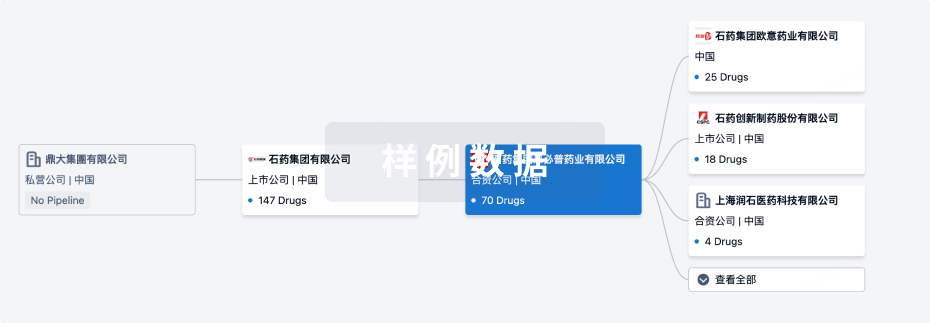
管线布局
2025年12月23日管线快照
管线布局中药物为当前组织机构及其子机构作为药物机构进行统计,早期临床1期并入临床1期,临床1/2期并入临床2期,临床2/3期并入临床3期
药物发现
21
29
临床前
其他
5
登录后查看更多信息
当前项目
登录后查看更多信息
药物交易
使用我们的药物交易数据加速您的研究。
登录
或
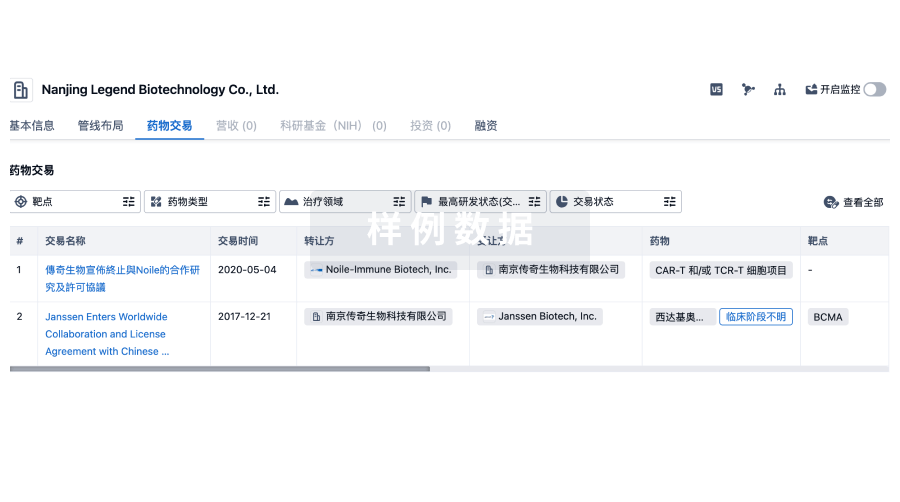
转化医学
使用我们的转化医学数据加速您的研究。
登录
或
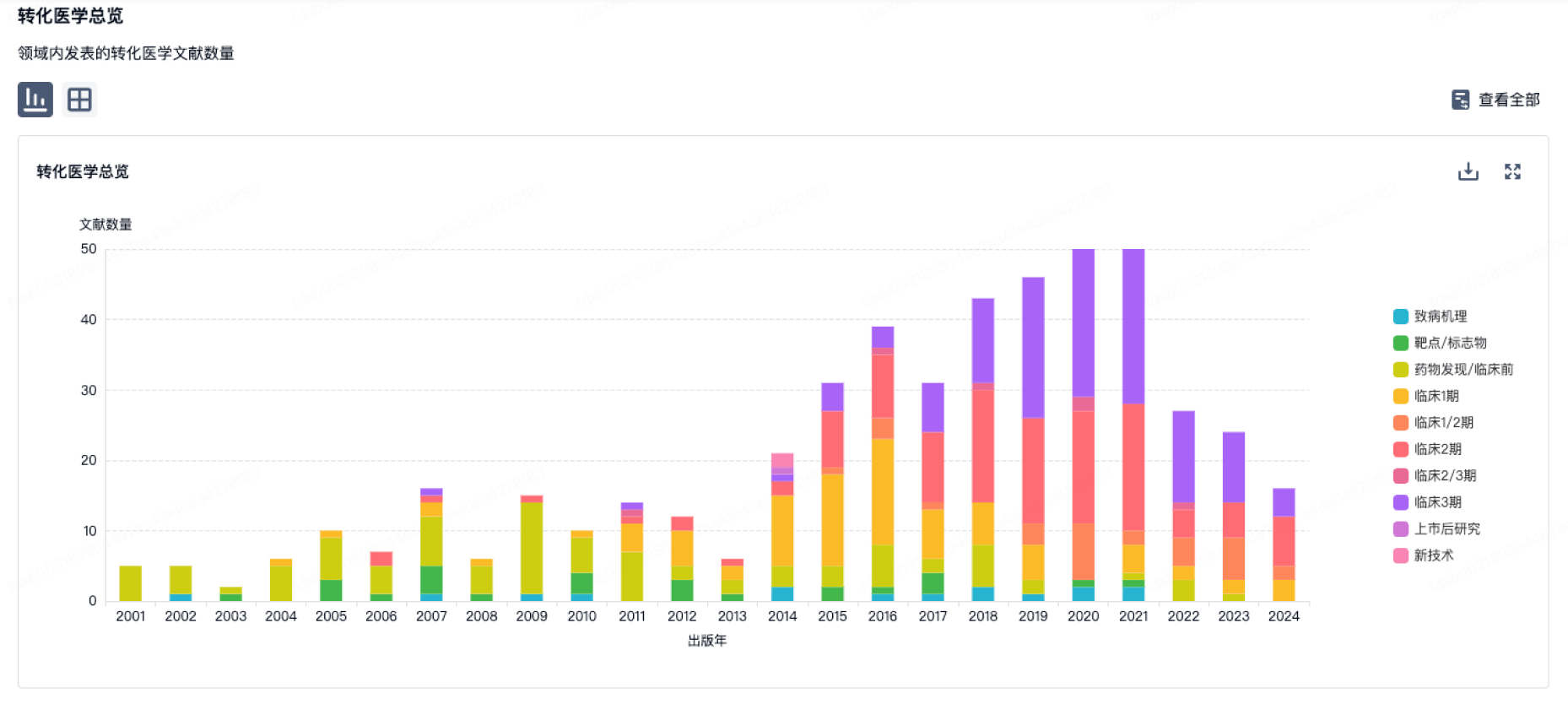
营收
使用 Synapse 探索超过 36 万个组织的财务状况。
登录
或
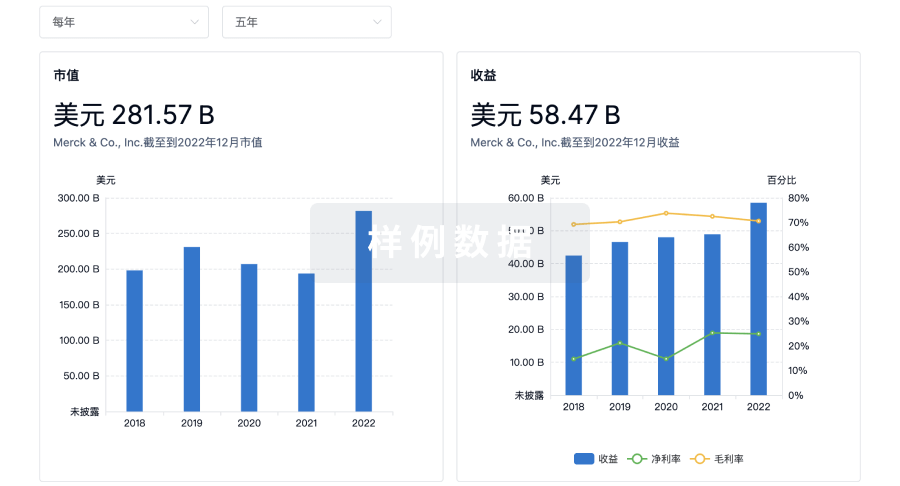
科研基金(NIH)
访问超过 200 万项资助和基金信息,以提升您的研究之旅。
登录
或
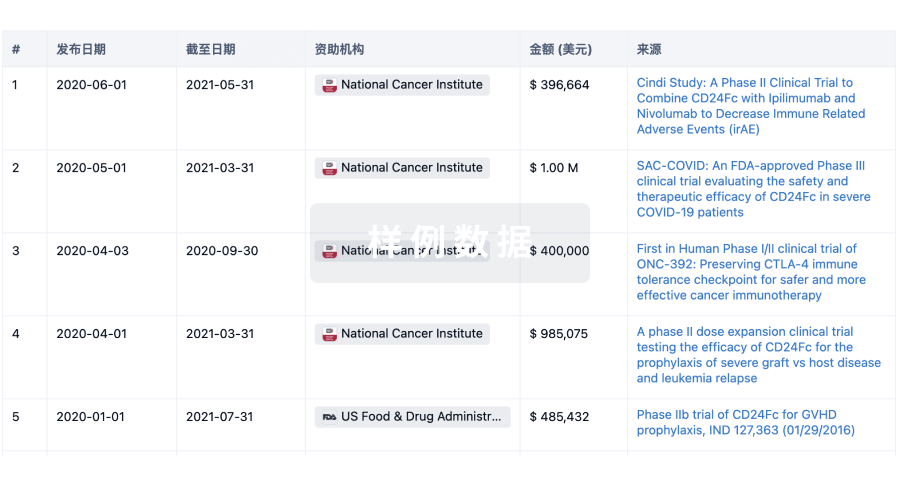
投资
深入了解从初创企业到成熟企业的最新公司投资动态。
登录
或
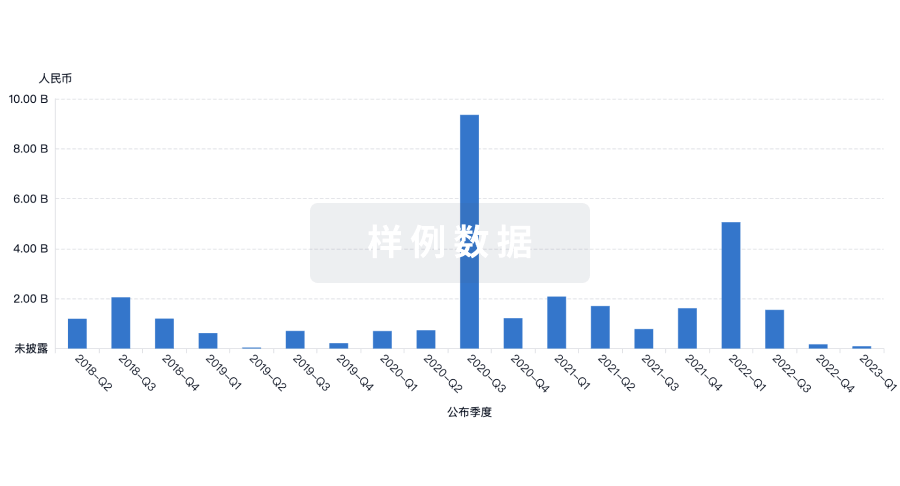
融资
发掘融资趋势以验证和推进您的投资机会。
登录
或
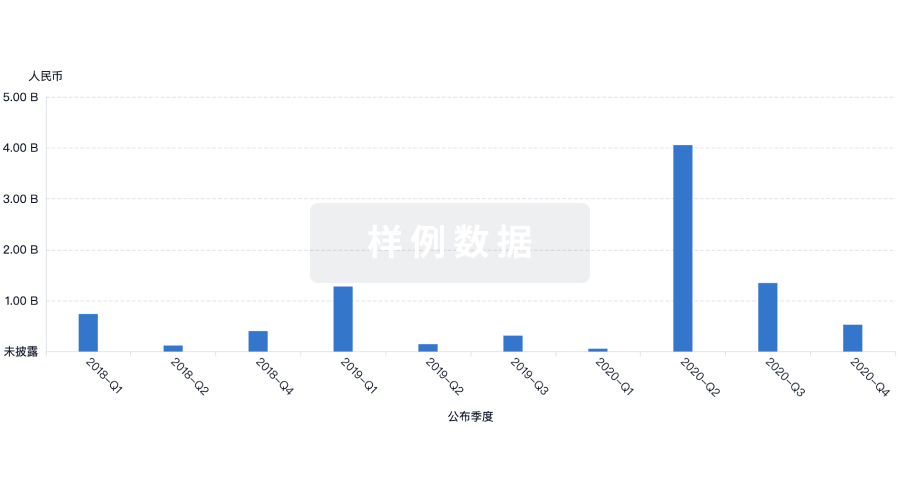
生物医药百科问答
全新生物医药AI Agent 覆盖科研全链路,让突破性发现快人一步
立即开始免费试用!
智慧芽新药情报库是智慧芽专为生命科学人士构建的基于AI的创新药情报平台,助您全方位提升您的研发与决策效率。
立即开始数据试用!
智慧芽新药库数据也通过智慧芽数据服务平台,以API或者数据包形式对外开放,助您更加充分利用智慧芽新药情报信息。
生物序列数据库
生物药研发创新
免费使用
化学结构数据库
小分子化药研发创新
免费使用